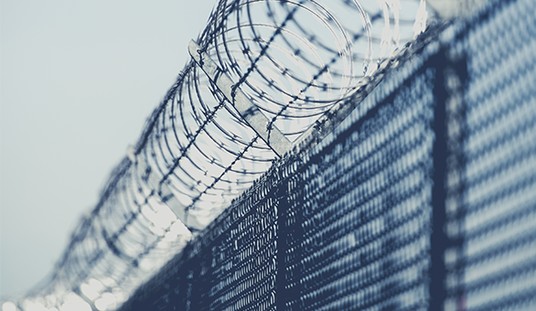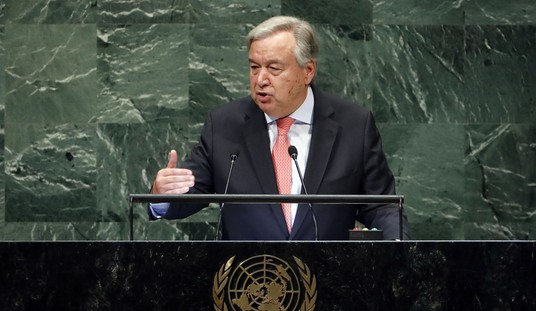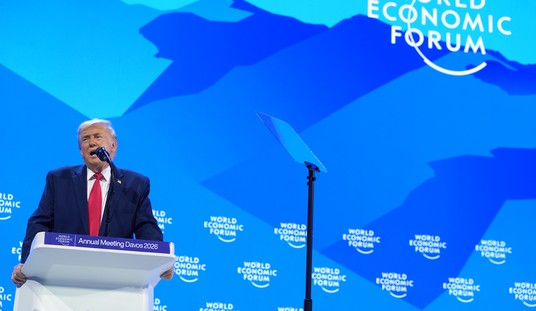It’s not bad, but it’s not going to revitalize the Dow this week, either. The US economy added 155,000 jobs in November, far off the 198K pace economists predicted. Unemployment remained at 3.7%, however, and wages continued to grow:
Total nonfarm payroll employment increased by 155,000 in November, and the unemployment rate remained unchanged at 3.7 percent, the U.S. Bureau of Labor Statistics reported today. Job gains occurred in health care, in manufacturing, and in transportation and warehousing. …
The average workweek for all employees on private nonfarm payrolls decreased by 0.1 hour to 34.4 hours in November. In manufacturing, both the workweek and overtime were unchanged (40.8 hours and 3.5 hours, respectively). The average workweek for production and nonsupervisory employees on private nonfarm payrolls held at 33.7 hours. (See tables B-2 and B-7.)
In November, average hourly earnings for all employees on private nonfarm payrolls rose by 6 cents to $27.35. Over the year, average hourly earnings have increased by 81 cents, or 3.1 percent. Average hourly earnings of private-sector production and nonsupervisory employees increased by 7 cents to $22.95 in November.
This level of job creation basically keeps pace with population growth (or a bit better), but falls far short of October’s 237,000. That number got revised downward in this report from the originally announced 250K, while the BLS added a thousand jobs to September’s announced job-creation level of 118,000. November’s results don’t quite qualify for the Baby Bear-Just Right middle between those points, but it’s enough to keep pressure on employers to promote wage growth.
NBC News notes the good numbers on wage growth too, but gives much of the credit to one specific employer. They also see a dark cloud to this silver lining on Wall Street:
November’s report showed the unemployment rate unchanged, at 3.7 percent, the lowest in almost 50 years, and wage growth ticked up to 3.1 percent — partly due to an increase in minimum wage by retail giant Amazon — matching the heady gain in October, which saw wage gains spike at the fastest pace since 2009. …
Wall Street is likely to have a strong reaction to November’s jobs report, with investors fearing wage growth gains could lead to rising inflation, putting more pressure on the Federal Reserve to raise interest rates to prevent the economy from overheating.
On the other hand, Reuters calls this a miss on expectations for wage growth. A drop in hours worked could be a signal of trouble ahead, one that might cause the Fed to back off:
U.S. job growth slowed in November and monthly wages increased less than expected, suggesting some moderation in economic activity that could support expectations of fewer interest rate increases from the Federal Reserve in 2019. …
Average hourly earnings rose six cents, or 0.2 percent in November after gaining 0.1 percent in October. That left the annual increase in wages at 3.1 percent, matching October’s jump, which was the biggest gain since April 2009.
Companies also reduced hours for workers. The average workweek fell to 34.4 hours from 34.5 hours in October. The employment report could heighten fears about the economy’s health and lower the probability of the Fed raising interest rates more than once next year.
So far the Fed thinks everything is at least hunky, if not also dory:
“Our economy is currently performing very well overall, with strong job creation and gradually rising wages,’’ said Federal Reserve Chairman Jerome Powell on Thursday. “In fact, by many national-level measures, our labor market is very strong.”
That’s true … at the moment. Recent market volatility has some worried that we may be heading into a recession, and that it might come at a very bad time for Trump. CNBC’s John Harwood evokes the Ghost of Carter Past:
But the uncertainty on display in gyrating financial markets this week has darkened expectations for Trump’s last two years. In the fourth quarter of 2018, forecasters already see growth slowing from the 4.2 percent and 3.5 percent recorded in the second and third quarters, respectively.
If the economy’s slowing to 3.5% annualized GDP growth, well, sign me up for that slow level. But Harwood still has a point:
For 2019 and beyond, they expect growth to slow progressively further as fiscal stimulus from lower taxes and higher spending winds down. Many predict the economy will lapse into recession in 2020.
“A strong dollar, weaker growth abroad, mounting corporate debt, a slowdown in housing and the ongoing havoc that tariffs are wreaking on global supply chains are each taking a toll,” Diane Swonk, chief economist for Grant Thornton LLP, wrote this week. “No one knows for sure which straw will break the camel’s back, only that they are piling up.”
Swonk has accelerated her previous prediction of recession from the second half of 2020 to the first half. In October, the National Association for Business Economics reported that two-thirds of forecasters it surveyed expect recession by the end of Trump’s re-election year.
The last president to run for re-election in a recession was Jimmy Carter. Worth noting: Democrats claimed the economy was in recession when George H.W. Bush ran, but it had already recovered. (Harwood misses that part in his history lesson, omitting GHWB entirely.) Politico also cites “many economic analysts” in its prediction of a coming recession, but quotes White House economic adviser Larry Kudlow’s rebuttal:
“Any time you see the stock market fall by 1,400 points in two days, there is lots of nervousness,” said Stephen Moore, a distinguished visiting fellow at the Heritage Foundation and informal economic adviser to the 2016 Trump campaign. “But the economy is fundamentally strong in terms of construction, manufacturing, and corporate earnings. I don’t think they are worried about a recession.”
“I am amazed at this mini-wave of recessionary pessimism that has swept the media,” National Economic Council Director Larry Kudlow said at a recent Wall Street Journal event. “The evidence is quite different than these speculations. We are humming.”
But many economic analysts also predict the recent economic boom will soon fizzle, with growth plunging below 2 percent by 2020, according to an analysis by S&P chief U.S. economist Beth Ann Bovino. Currently, the economy is growing at a rate of 3.5 percent. That squares with cyclical trends suggesting the U.S. is due for an economic downturn soon.
Well, this employment report is hardly a strong rebuttal to the pessimism, but it’s not exactly a strong support for it either. Maintenance-level growth isn’t terribly exciting, but we managed to avoid a recession over the last few years with that kind of job growth — and that was without the wage growth we’re seeing right now. For now, there seems to be any real signals of recession outside of Wall Street’s volatility — and certainly none in this jobs report.








Join the conversation as a VIP Member